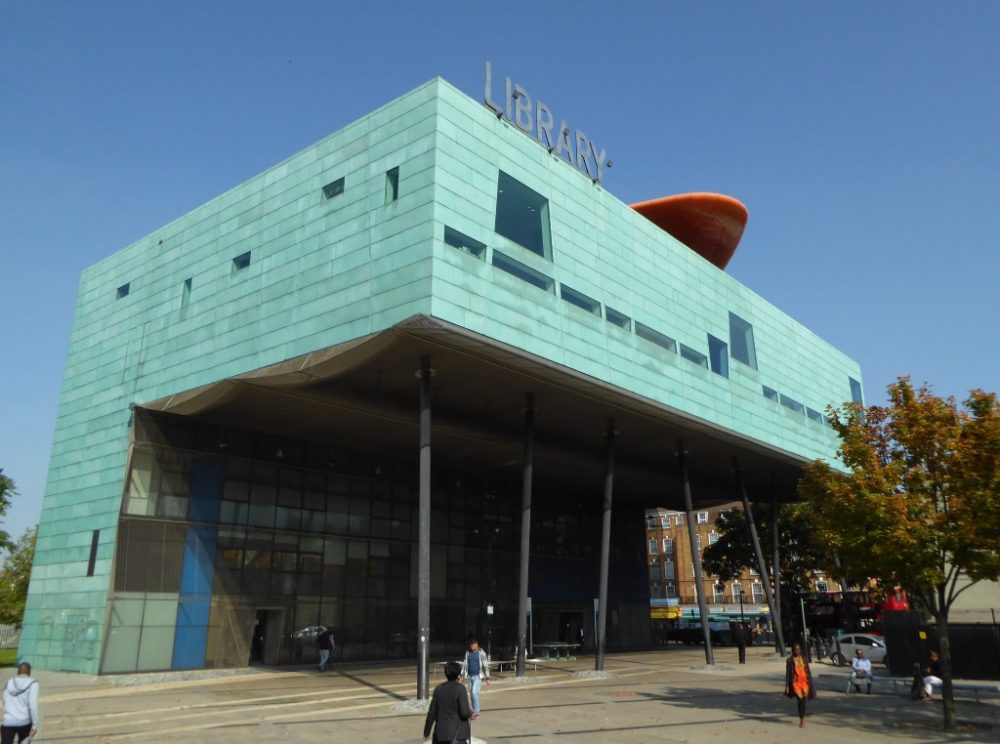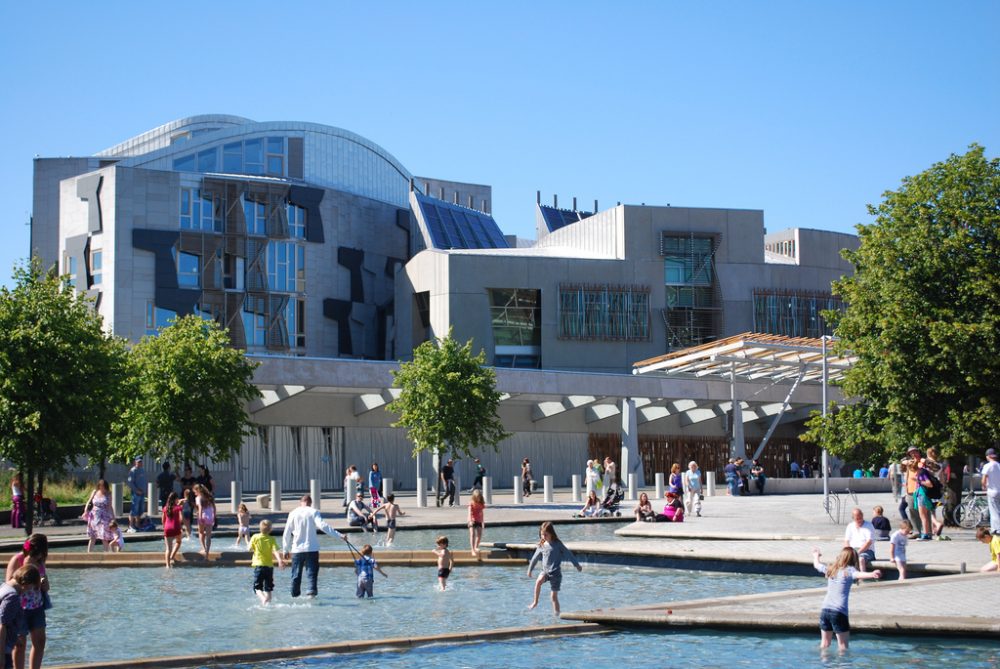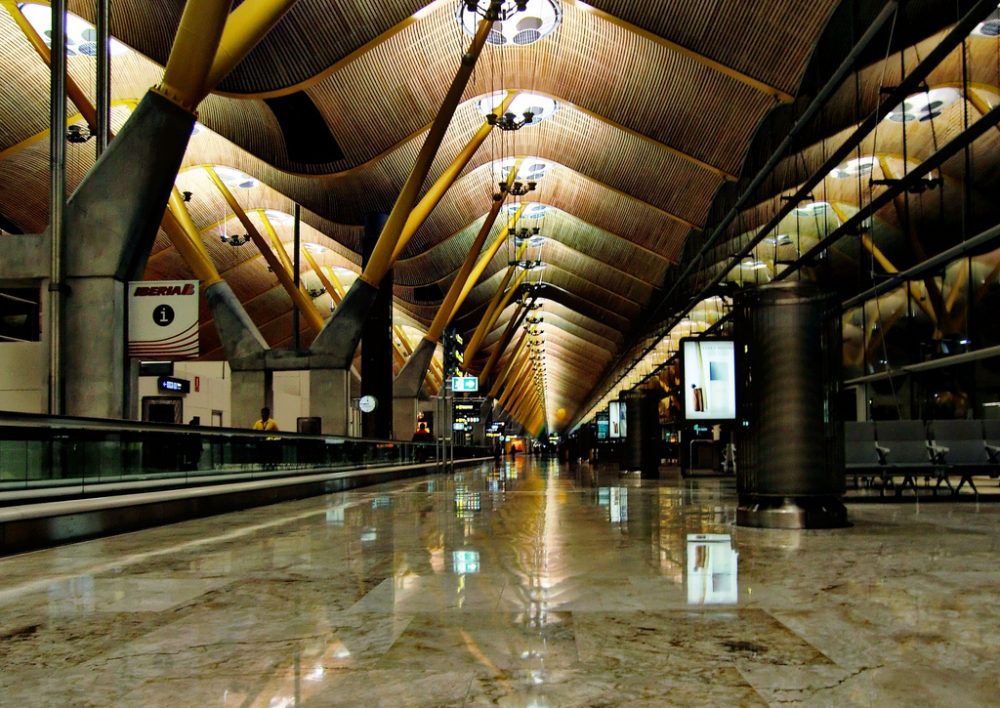The RIBA Stirling architecture awards represents the pinnacle of architecture, and only the very best in the industry will reach the shortlist. So with Hastings Pier taking the 2017 award for its sourcing of renewable materials, we’d like to take a look at three iconic designs of previous winners to see how the Stirling award takes into consideration not only design, but ecology, innovation and function.
 2000 – Peckham Library: “Silence is golden”
2000 – Peckham Library: “Silence is golden”
If there is a defining functional requirement of a library it is to inspire a sense of adventure, freedom, and peace. And with this in mind, Will Alsop and Jan Störmer exquisitely encompassed the design brief.
The history of books, of Alexandra library, of knowledge being passed through generations, and of puritanism and freedom, gave Alsop and Störmer a wealth of inspiration for their design. The building is an embodiment of playful fun, mixed with a space to quietly read and relax. The interior incorporated reading pods, study desks, a quiet area beneath the street, away from the hubbub of Peckham and the never-ending traffic.
The pre-patinated copper exterior is: Green, very green indeed. The L shape angled upper floor is supported by pin-like, misplaced steel supports and the windows are odd and uneven. The seeming randomness of the building reflects the contents, the journey to anywhere whilst lost in the pages of a book.
But the thought and work that went into the outlandish design has largely been undone over the 17 years since its completion. More desks have been added due to demand, and the reading pods have been removed. This has been done by the local council according to feedback from the staff and library users. Alsop himself laments that cost-saving has led to the design being altered from its original course, and rather than being the good-natured, yet mischievous little place it was intended to be, it has taken a turn towards the municipal, Umbridgean place of work, which is a sad thing for a library to be.
 2005 – Scottish Parliament: “Stunning, impressive, aesthetic. Costly, controversial, late. You choose”
2005 – Scottish Parliament: “Stunning, impressive, aesthetic. Costly, controversial, late. You choose”
The lead up to the completion of this building is a story in itself. The winner of the 2005 Stirling award was complex; both in design and project management. It is one of the first buildings to implement a project across countries, using locally sourced materials and designs from two different firms. The death of Catalan architect Enric Miralles before the completion of the building only led to further complication, in what was already an innovative, intricate project joining the very best of Catalonian architectural design with that of Scotland.
The inquiries that took place in the aftermath of a building that came in at 800% of its original budget were understandable, there was a lack of clarity on which company was leading the project which led to spiralling costs and artistic division. But the amount of negative press devoted to it far exceeds the issues in its construction. Why?
With a multibillion-pound renovation in the pipeline for the decaying Houses of Parliament in London, people are very sensitive to expenditure on politicians’ workplaces. With rumblings of Scottish independence ruminating since 2001, the Scottish Parliament project was lost in a shroud of political manoeuvring countrywide.
So it is unfortunate that the politics began to overshadow, what we think is the most important building in British architecture in over 100 years. The lavish, leafy structures, the incorporation of Scottish granite and Gneiss, which afford the interior an unparalleled Scottish flavour. It makes a powerful statement of confidence and generosity, two fundamental pinnacles of Scottish culture itself.
The lesson to be learned from this is that in architecture, as in all walks of life; never work with children, animals, or politicians.
 2006 – Barajas Airport Terminal 4: “Above us only sky”
2006 – Barajas Airport Terminal 4: “Above us only sky”
Rogers Stirk Harbour + Partners took on this project covering an area of 760 square kilometres; one of the biggest airport terminals in the world and carried out with style and function.
The roof is nothing short of the most-inspiring, daring, and risky pieces of architecture in the world. The intricacies involved in logistics have made airport design a graveyard of failed projects. This has led to a high level of control being imposed by local authorities on architects’ designs to avoid costly issues.
But Barajas is both beautiful, functional and thoroughly deserving of its Stirling award. Its bamboo, wave-like shape, spread across an area bigger than 20 football pitches. The supports used simple bevel cut, bolted struts, which allowed for pre-fabrication and eased the on-site pressure for such a massive structure, the supports themselves are a pleasing elliptical design to complement the fluidity of the roof.
For travellers, all of this means a much more refreshing walk from the aeroplane. Rather than a token piece of architecture, the whole terminal is designed to provide natural light and sweeping, flowing lines, far from the usual uninspiring trudge through blue-lit concrete terminals, Barajas is an achievement in design.

